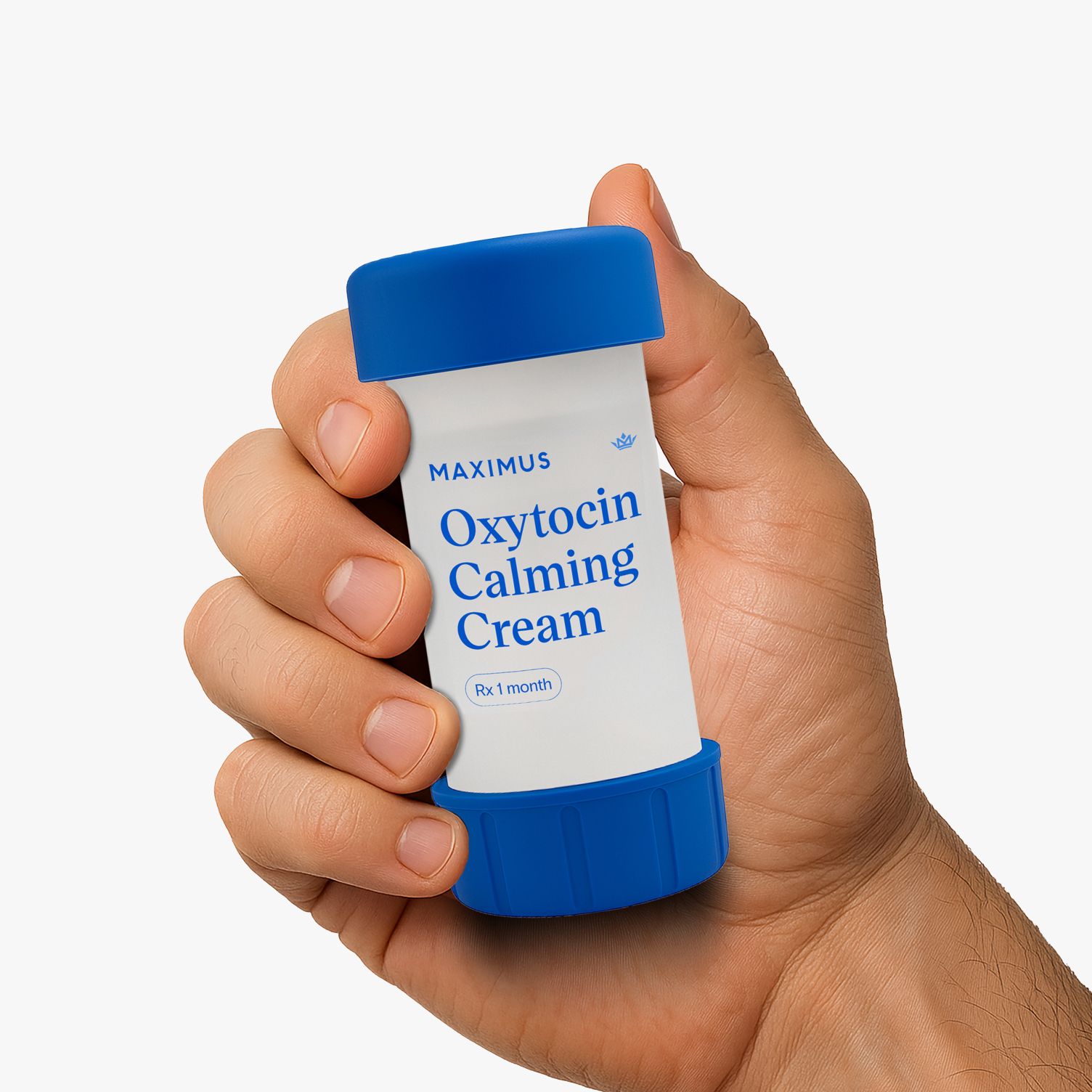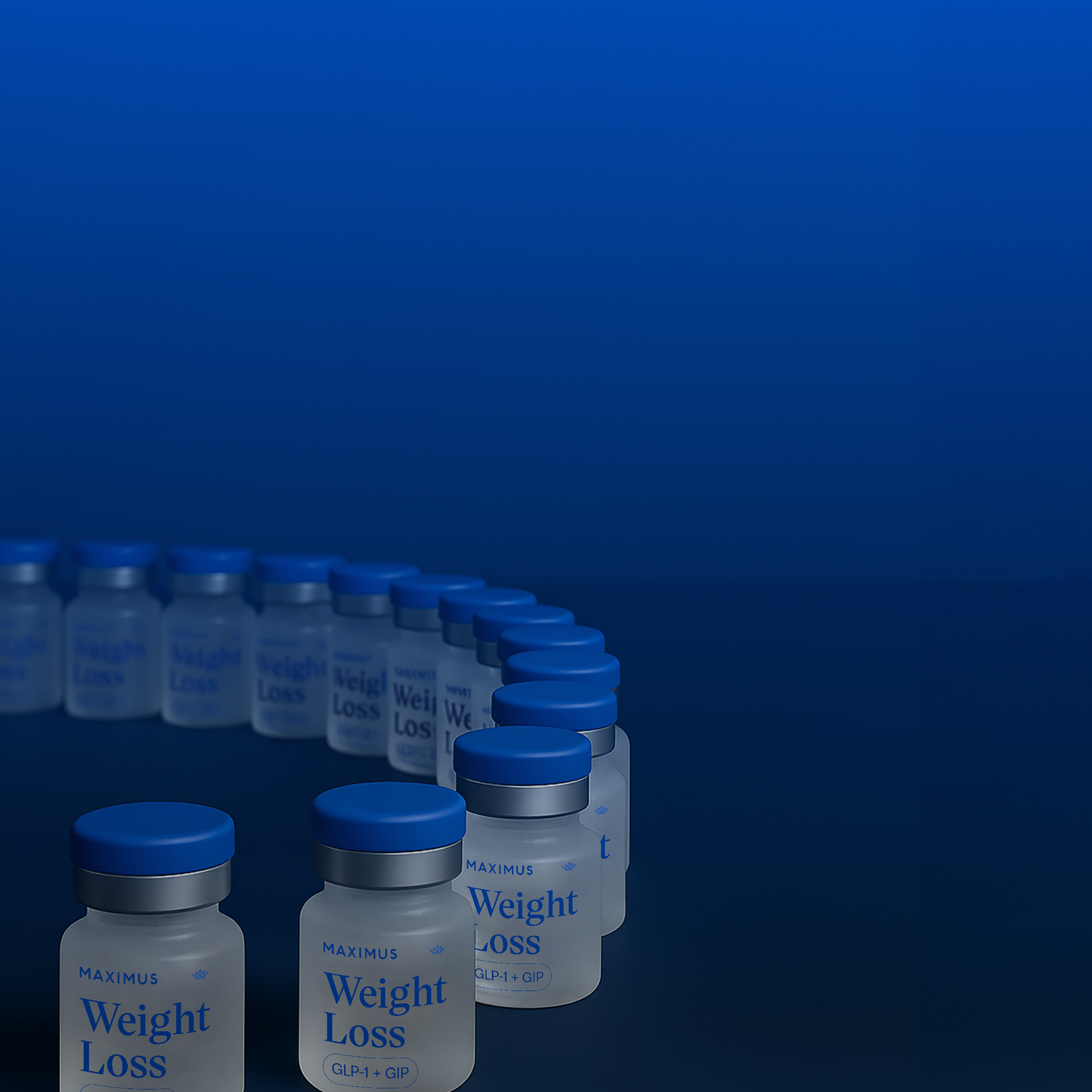By Gabriel Alizaidy, MD, MS, and Starling Krentz, MS
Testosterone is one of the most powerful tools in medicine. When it works, it really works. Energy through the roof, body composition transformed, mood on cloud nine, libido comes roaring back.
But if you're relying on testosterone alone to fix your metabolic health, you're setting yourself up for disappointment.
New research is revealing why so many men hit a wall with TRT, despite having "perfect" hormone levels on paper. The answer isn't in your blood. It's in your fat cells.
The Hidden Battle Inside Your Fat Cells
A recent study in The Journal of Clinical Endocrinology & Metabolism revealed something that should make every man utilizing testosterone therapy pay attention.¹ Researchers studied fat tissue from men with obesity and type 2 diabetes, and what they found challenges everything we thought we knew about hormone optimization.
Your fat cells aren't just storage sites. They're hormonally active, and they're literally changing how your testosterone and estrogen behave. The study found that in metabolically unhealthy men, aromatase (the enzyme that converts your testosterone into estradiol) was cranking overtime. No surprise there. But here's where it gets interesting.
They also discovered that ESR1, the receptor that normally makes estrogen metabolically protective, was significantly reduced. In this environment, estradiol actually reduced insulin-stimulated glucose uptake in fat cells, while testosterone improved basal uptake. At first that might not sound so terrible. But fat isn’t just storage. It is supposed to act like a buffer, pulling in excess glucose so it does not spill into the wrong places.
When that buffer fails, the extra fuel has to go somewhere else. It ends up in the liver, muscle, even the pancreas, where it drives fatty liver, insulin resistance, and impaired insulin secretion. Your fat tissue was essentially sabotaging your hormone therapy from the inside out, turning what should have been a protective process into a source of damage.
The kicker? Estrogen levels on blood tests looked completely normal. Your bloodwork could come back perfect while inside your fat tissue, estrogen signaling was quietly driving insulin resistance. That disconnect is massive. It means you could be looking at "optimal" numbers on paper while deeper dysfunction continues unchecked.
Why Your Hormones Can't Work in Isolation
Hormones never act alone. They work within the broader metabolic environment of your body. When that environment is unhealthy, the benefits of testosterone become limited, or worse, they can actually work against you.
More testosterone in an unhealthy metabolic environment means more substrate for aromatization. More aromatization means more estradiol in tissue where the protective receptors are downregulated. It’s like installing the newest operating system on a beat-up computer with terrible specs. The software is there, but the hardware can’t keep up.
This is why on paper your hormones can be perfect, but how you feel doesn’t match the numbers. In response, people assume that they just don’t have high enough numbers, but the answer isn't more testosterone. The answer is fixing the metabolic dysfunction that's handicapping their hormone therapy.
The Foundation Has to Be Metabolic Health
If you're serious about optimization, testosterone should never be your whole plan. The foundation has to be improving metabolic health directly.
Yes, that means the basics: structured fat loss, dialed-in nutrition, and consistent training. But let's be real here. We're in 2024, and we have tools that can accelerate this process dramatically. Among those tools, GLP-1 receptor agonists are game-changers.
GLP-1 receptor agonists can be powerful tools when used thoughtfully. Even at microdoses, they may help reduce fat mass, improve glycemic control, and take pressure off dysfunctional pathways inside fat tissue. In the right context, they can address parts of the metabolic environment that might be limiting testosterone’s effectiveness.
When insulin sensitivity improves with GLP-1s, you are not just losing weight. You may also change how fat tissue handles hormones. Lower insulin and reduced adipose inflammation can decrease signaling that may upregulate aromatase, and this can help move receptor activity toward a more protective estrogen response rather than a problematic one.
The Precision Stack for Men's Health
Here's what precision men's health actually looks like:
Testosterone provides the foundation for optimal androgen levels, but it is only one piece of the puzzle.
GLP-1 receptor agonists can help restore aspects of metabolic health, reduce visceral fat, and create an environment where hormones may work more effectively. This is not just about appetite suppression at high doses. At carefully calibrated microdoses, they can support metabolic restoration in a way that makes everything else function better.
Growth hormone secretagogues such as Sermorelin may enhance recovery, improve sleep quality, and potentially synergize with both testosterone and GLP-1s to support body recomposition.
This is not about throwing everything at the wall. It is about recognizing that metabolic dysfunction and hormonal imbalance are interconnected problems, and they often require interconnected solutions.
The Bottom Line
If you’re using testosterone therapy and not seeing the results you expected, or if you’ve plateaued after the initial improvements, the solution isn’t necessarily to adjust your dose. The real question is whether your metabolic health is strong enough for your body to actually use the hormones you’re giving it.
For men who are already investing in hormone therapy, adding tools that directly restore metabolic health isn't optional anymore. It's just good medicine. The data is clear: hormones and metabolism are inseparable. Treat them that way, and you'll get results that testosterone alone could never deliver.
At Maximus, we've built our protocols around this understanding. Our physicians don't just improve your testosterone. They assess your entire metabolic picture and create comprehensive strategies that address both hormonal and metabolic dysfunction simultaneously. Because that's what actually works.
References:
Mauvais-Jarvis F, et al. Estrogen Signaling in Adipose Tissue From Men With Obesity and Insulin Resistance Is Depot-Specific and Upregulated by Testosterone. J Clin Endocrinol Metab. 2024;110(10):e3410-e3421.
----
Disclaimer: The contents of this article, including, but not limited to, text, graphics, images, and other information, is for information purposes only and does not constitute medical advice. The information contained herein is not a substitute for and should never be relied upon for professional medical advice. The content is not meant to be complete or exhaustive or to be applicable to any specific individual's medical condition. You should consult a licensed healthcare professional before starting any health protocol and seek the advice of your physician or other medical professional if you have questions or concerns about a medical condition. Always talk to your doctor about the risks and benefits of any treatment. Never disregard or delay seeking professional medical advice or treatment because of something you have read on this site. Maximus does not recommend, endorse, or make any representation about the efficacy, appropriateness, or suitability of any specific test, products, procedures, treatments, services, opinions, healthcare providers or other information contained herein. Maximus is not responsible for, nor will they bear any liability for, the content provided herein or any actions or outcomes resulting from or related to its use.
----





